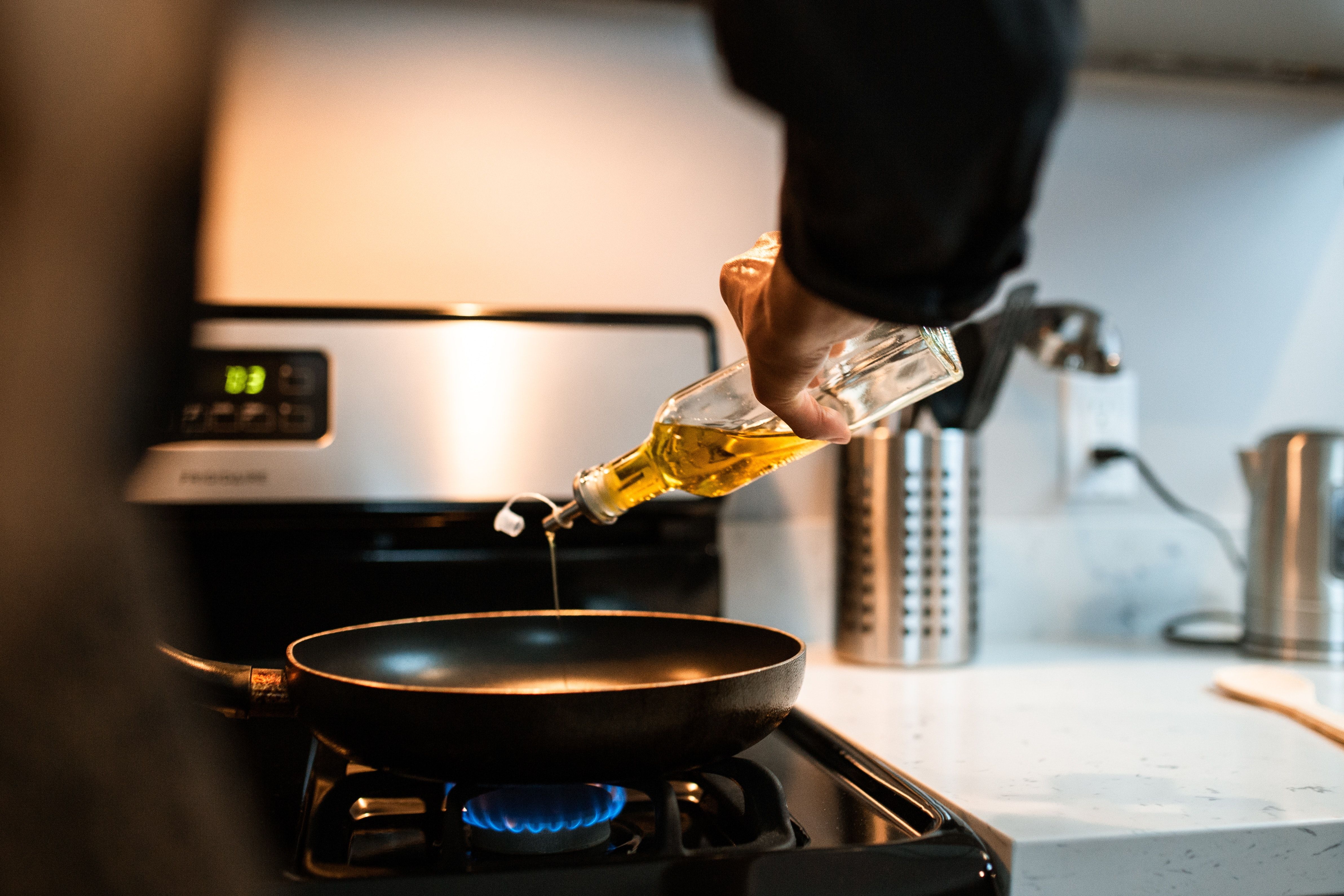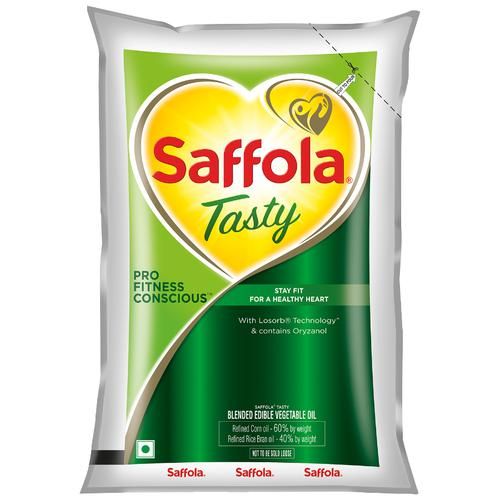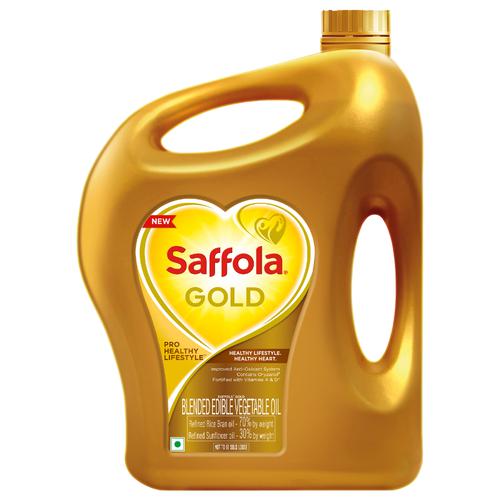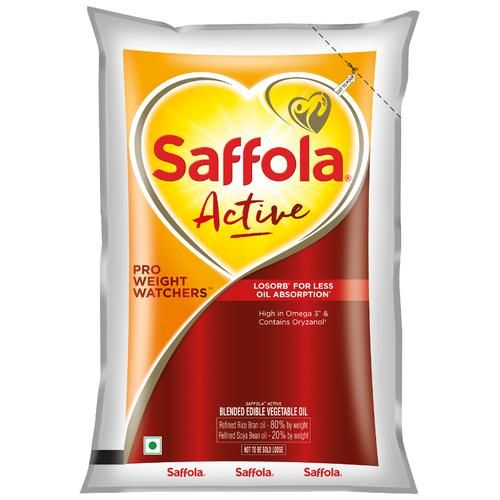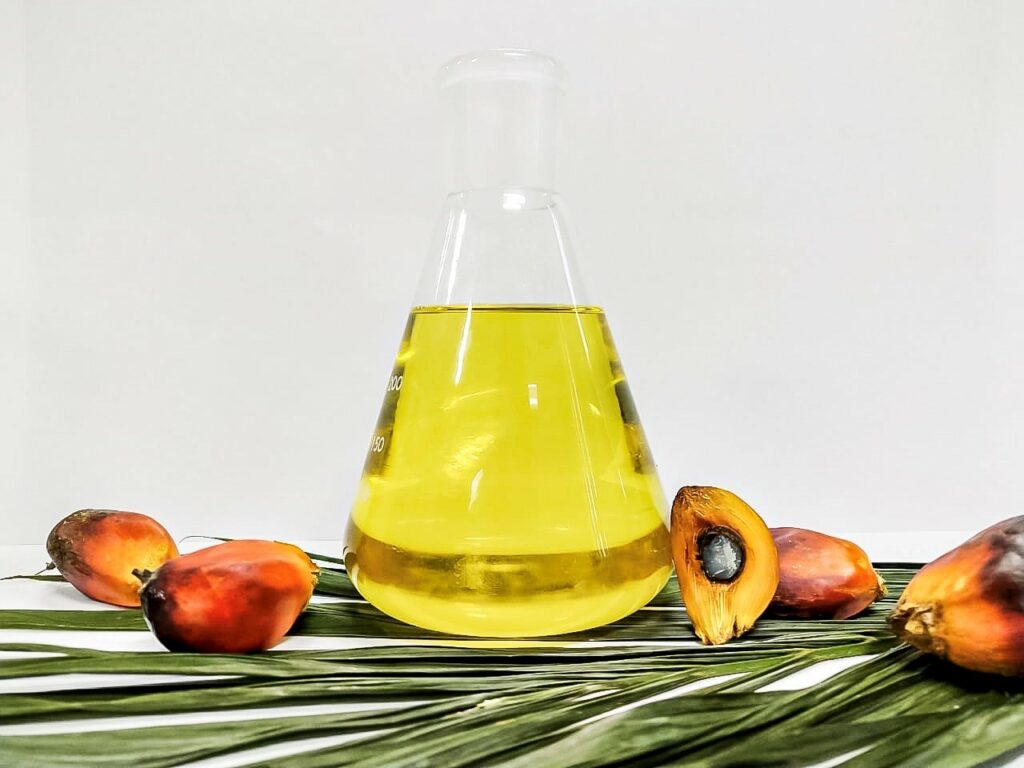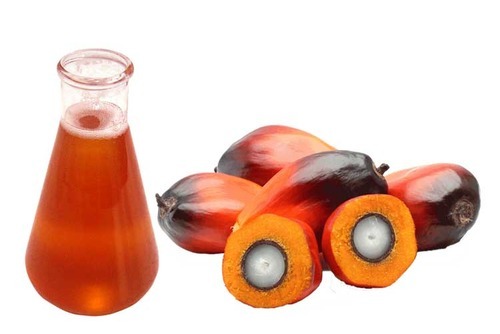Published Date January 24, 2003
Cooking Oils & How To Use Them
By Arpita Sudev
5 min read
Last update date: January 24, 2003
All about monounsaturated fats, polyunsaturated fats, trans fat and cooking oil.

Indian dishes are well known for their lip-smacking flavours, aroma, and finger-licking taste. One of the key reasons for these qualities of Indian delicacies is the cooking oil used in them.
Today's world of social media and telemarketing exposes us to a variety of edible oils through advertisements - each asserting a whole lot of health claims. The right selection of edible oils is essential, especially in the Indian context where cooking methods are different from that of the west. Edible oils have several fatty acids which have exclusive functions in the human body.
However, if you are not using the right quality and quantity of oil, the resulting impact on the body can lead to lifestyle disorders that are difficult to revert. These fatty acids can be differentiated into the following classes:
- Saturated fatty acids: a) Short-chain b) Medium-chain c) Long-chain SFA
- Monounsaturated (MUFA)
- Polyunsaturated (PUFA): linoleic & Alpha-linolenic Acids
- Trans fatty acid
Monounsaturated and polyunsaturated fats are usually referred to as healthy fats. In addition to these unsaturated fats, edible oils contain several antioxidants like tocopherols, oryzanol, carotenoids, tocotrienols, phytosterols, and other micronutrients.
PUFA are found in vegetable oils (soybean oil, corn oil, and safflower oil), fish (salmon, mackerel, herring, trout, and sardines), and most nuts and seeds. The ALA (Alpha-linolenic acid) can be converted by the body into EPA (eicosapentaenoic acid)and DHA (docosahexaenoic acid), but only about 2–10% is converted. The human body cannot synthesize and make ALA and linoleic acid (LA), an omega-6 fatty acid, making it an essential fatty acid since it needs to be obtained from dietary sources.
Nowadays non-communicable diseases/chronic diseases are a group of diseases that develop as a result of long-term exposure to risk factors such as unhealthy diets, smoking, and lack of exercise. It is now generally accepted that not only obesity [body mass index (BMI) > 30 kg/m2) but even excess weight (BMI > 24.9 kg/m2) also increases the risk of a number of major chronic diseases.
The quantity of fat in the daily eating plan is an important factor and so is the quality of fat in the diet as some fats have a positive impact on normal growth and development, brain function while others may influence blood cholesterol levels negatively and could thus contribute to the development of coronary heart diseases and stroke.
Every oil has a smoke point. If heated beyond that, the oil starts to break down and releases harmful chemicals that not only affect the taste of the food but also make it harmful for consumption.
Around 90% of people use refined oil for cooking. In medical terms, refined oil is known as “Spoiled Oil” (The oil is extracted at high temperatures using chemicals but more importantly all the vital nutrients are lost in the process). Cold-pressed or Wood pressed oils are better sources of oil for cooking purposes.
Below mentioned are a few oils that are beneficial for cooking and keeping us healthy.
Mustard Oil
Mustard oil can be identified by its strong and pungent smell but it has amazing digestive properties, inhaling steam-containing mustard oil has been shown to clear respiratory congestion.
Mustard oil is one of the healthiest cooking oils, containing erucic acid (Omega-9 monounsaturated fatty acid) and glucosinolate. Glucosinolate is antibiotic, fungicidal, and has cancer-preventing qualities.
Sunflower Oil
Sunflower oil is a great source of vitamin E, making it one of India's most popular cooking oils. It comes from sunflower seeds which are not seeds but small fruits.
This oil can keep its nutritional value intact even at high temperatures. High levels of monounsaturated fats (in sunflower oil) help control blood cholesterol levels and lower blood pressure, reducing the risk of heart disease. The only drawback is that it is high in omega-6 fatty acids, which may harm your health.
Research suggests that sunflower oil emits high levels of toxic aldehyde fumes when exposed to heat over extended periods, compared with other oils. The partially hydrogenated variety of sunflower oil contains trans fats, which worsen blood cholesterol levels, and increases inflammation and the risk of diabetes. When heated to higher temperatures over time, some toxic varieties are also high in omega-6 and may contribute to inflammation in the body when consumed in excess.
Olive Oil
Olive oil is known for being full of antioxidants and the healthiest of all. Olive oil has a low smoking point and is good for low and medium-heating food items. Availability of antioxidants, some of which have powerful biological effects, lower potential risk of stroke, and lower blood pressure. Some researches show that a moderate intake of this oil may even aid weight loss. A couple of its drawbacks are that it is extremely expensive and it is rare to find unadulterated (pure) olive oil.
Rice Bran Oil
Rice bran oil is extracted from rice bran, the outer layer of the rice grain. Can be used for both frying and baking because of its neutral taste. It has a high smoke point and health benefits that can help prevent heart problems and lower blood sugar. It’s a good source of unsaturated fats, vitamin E, and other important nutrients. Also, several active compounds in rice bran oil, including oryzanol and tocotrienols, may provide antioxidant and anti-inflammatory effects.
Groundnut Oil
Groundnut oil (also known as peanut oil) is a good choice for Asian foods. This oil has antioxidant properties for the skin and it also contains high amounts of linoleic acid, a type of omega-6 fatty acid, and smaller amounts of palmitic acid, a saturated fat. The amount of omega-6 in peanut oil can be a cause of concern for many people.
Coconut Oil
Coconut oil is one of the top choices for high-heating foods. It contains a high amount of medium-chain triglycerides (MCTs), which boosts metabolism and promotes satiety. It is good for fat loss and brain functioning. It does not perish even when stored for months. The food cooked in coconut oil makes you feel fuller for longer durations. It is also known for improving cognition. One of its negative impacts is that it is high in saturated fats, which increases LDL (bad cholesterol) levels.
Soybean Oil
Soybean oil is one of the best types of oil for vegans. It mostly consists of polyunsaturated fats, which are linked to lower cholesterol levels and reduce the risk of heart diseases. It is rich in vitamin K, which may help maintain bone strength and reduce the risk of fractures. It’s also rich in vitamin E, a nutrient that can help promote skin health. Applying it topically may protect against inflammation and help the skin retain moisture.
Flaxseed Oil
Popularly known as flax oil or linseed oil, it contains many active compounds including minerals like magnesium and calcium. When it comes to taste and smell, it has a nutty aroma and a crisp taste. The special feature of cooking in flaxseed oil is that it aids in menopause symptoms. Though large doses can cause diarrhoea and loose stools. Those undergoing surgeries or are about to have surgery should stop consuming flaxseed oil two weeks before the procedure.
Takeaway…
The ideal fat content in a balanced diet aims to give a PUFA / SFA scale of 0.81–1.0g and linoleic & Alpha-linolenic Acid of 5–10g. A single type of cooking oil cannot achieve this as each oil lacks one or the other essential fatty acid.
References
- https://www.seniority.in/blog/10-best-cooking-oils-to-maintain-a-healthy-lifestyle/
- https://www.newindianexpress.com/expressdeals/other-categories/beauty-and-health/best-oils-for-cooking-in-india/161.html
- https://timesofindia.indiatimes.com/life-style/food-news/which-is-the-healthiest-oil-for-indian-cooking/photostory/70512648.cms
- https://www.femina.in/food/best-cooking-oils-for-a-healthy-life-194442.html
- https://www.tarladalal.com/article-which-oil-is-the-healthiest-for-indian-s-388
- https://www.youtube.com/watch?v=_urKrTNH5G0
Keep reading
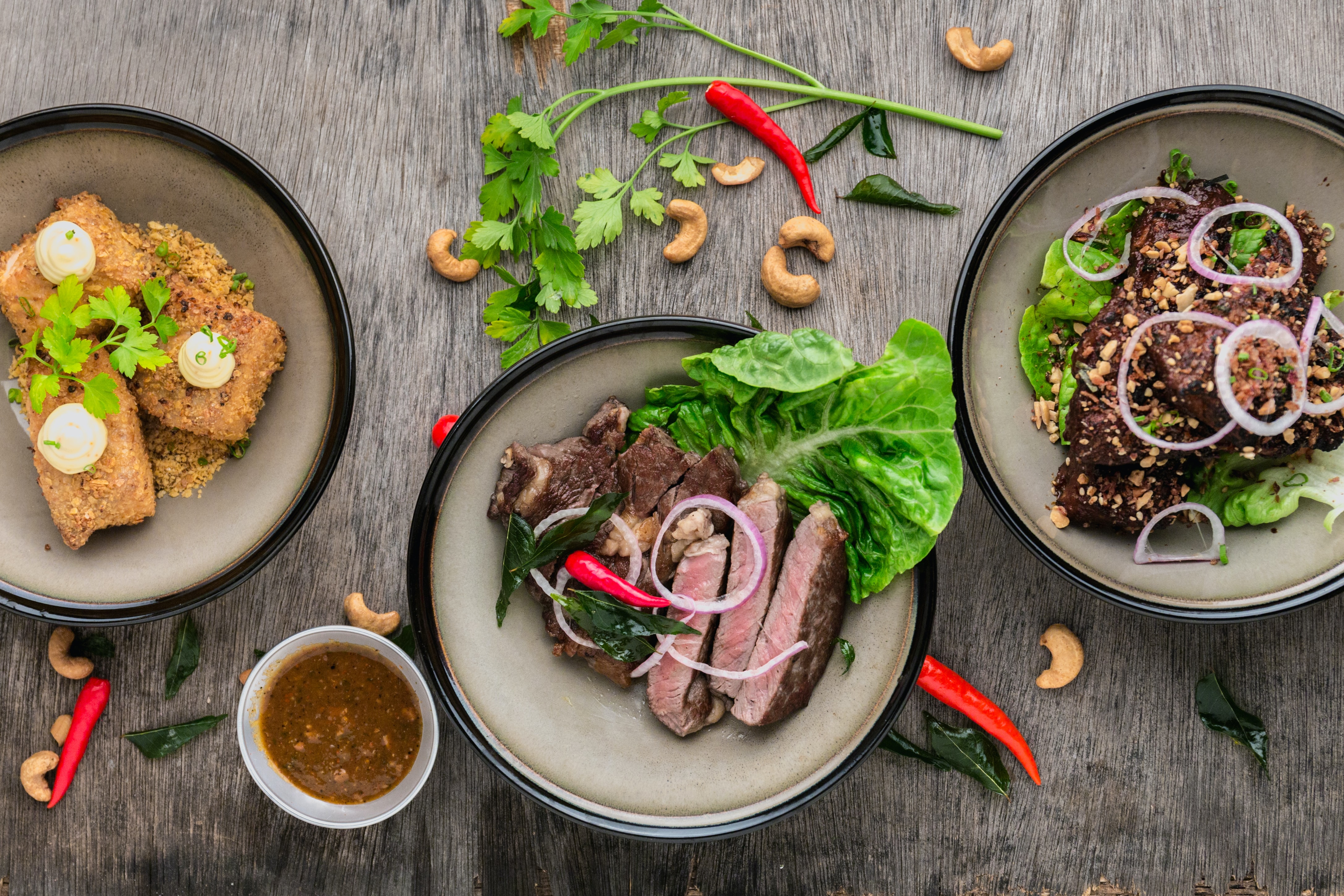
How to Deal with High Uric Acid?
All about purine-rich foods, carbonated drinks, vitamin C and high uric acid.
By Arpita Sudev

Kidney Stones and how to prevent them with the help of nutrition
All about calcium, coffee, plant-based foods and kidney stones.
By Naurin Ansari

How does a seed form?
Preconception care helps to find out issues that can create problems during pregnancy and avoid them with ...
By Hetvi Shah
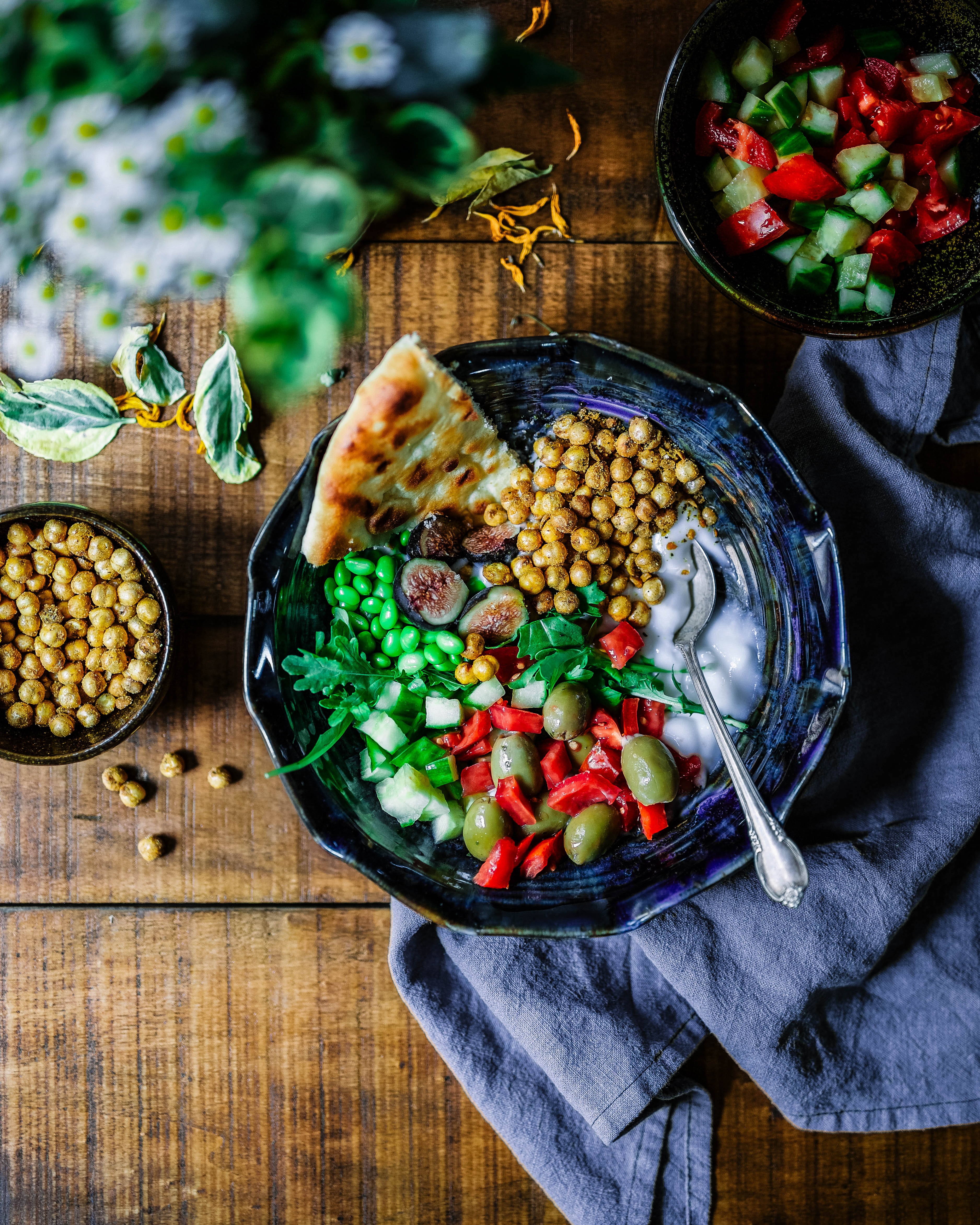
How Much Do You Know About FODMAP?
All about IBS, Crohn's disease and FODMAP.
By Arpita Sudev
Related Items
Choose Healthy With Us.
Know the real truth about your food. Stay informed and healthy, for free.

Download the App Now
Certified nutritionists trust our food recommendations. Safe to say, so can you :)




